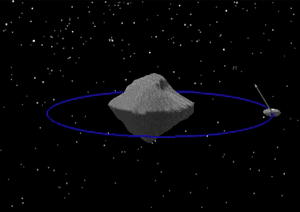The European Space Agency just announced the asteroid they chose for an upcoming controlled crash landing of one of their spacecraft. The objective? Well, more or less, they just want to see what happens.

The Asteroid Impact and Deflection Assessment (AIDA) mission will intercept the asteroid, called Didymos, in 2022, when the asteroid gets within 11 million kilometers of Earth. The announcement couldn’t came at a better timing, right in the wake of a giant asteroid that almost collided with Earth and right after a fireball blazed over Russia causing havoc.
Scientists have become increasingly concerned with the risks associated with a potential cosmic clashes between our planet and foreign cosmic bodies. There are thousands of asteroids currently tracked by NASA and other space agencies in the world, and we currently possess the technology to avert a major threat in case such an event might surface, however recent events have shown that we aren’t entirely prepared.
The mission has been planned for a few years now, and will consist of two spacecrafts. One will crash in one of the two Didymos rocks at 14,000 MPH – it’s actually an asteroid pair – while the other spacecraft will standby an record everything that happens.
The goal is to characterize how an object’s orbital mechanics would change if it’s disturbed by an impactor. Since the energy released in such an impact is estimated to be similar to that released during a satellite impact with a piece of space debris, it will aid scientists better their understanding and aid in the development of solutions that might protect spacecraft. It also has implications for the future deflection of asteroids that might threaten Earth.
Didymos itself poses absolutely no threat to Earth, since it’s closest flyby, and at the same time point of impact with the ESA spacecraft, will be within 11 million kilometers of Earth. One of the binary asteroid is roughly a half mile across and the other is about 500 feet across. Read more about AIDA.






